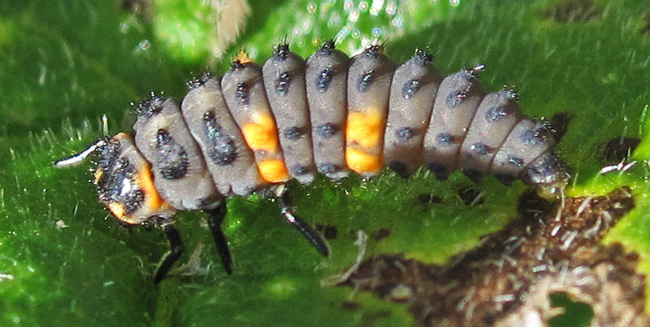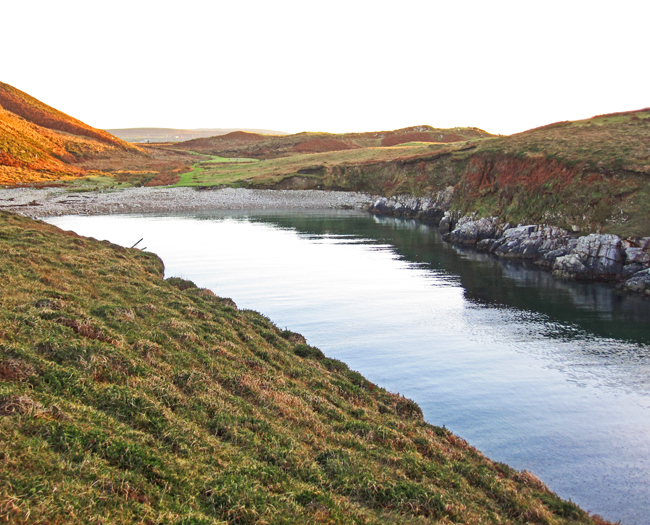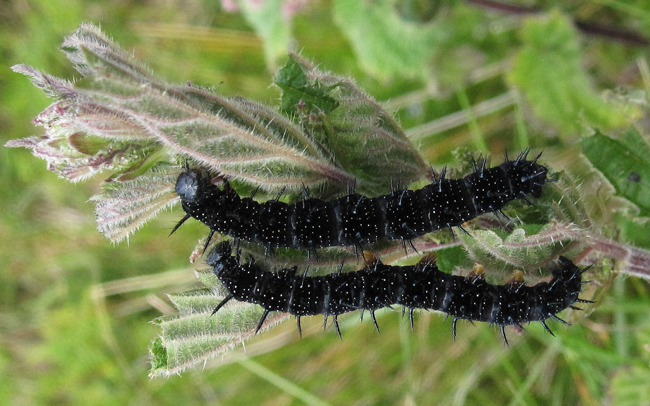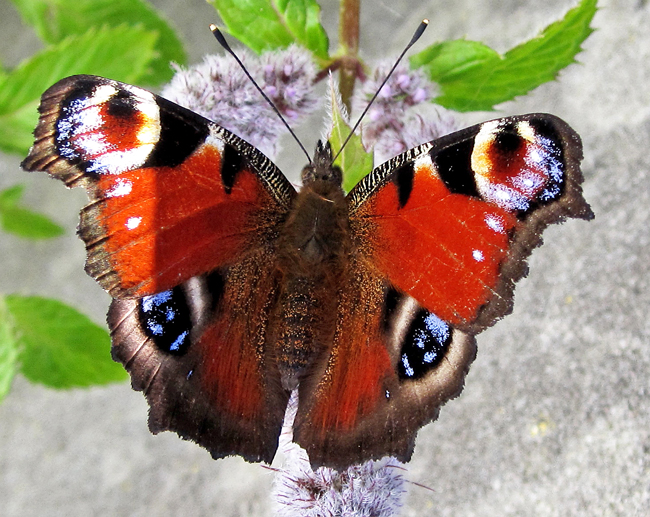CLEGGAN HEAD WALK
![]()
Cleggan Head lies on the northern side of Cleggan Bay (see photo right). It's a very beautiful area, and well worthwhile exploring.
HOWEVER, note that Cleggan Head is a privately owned sheep farm, and you walk there with the owners' permission. UNDER NO CIRCUMSTANCES ARE DOGS ALLOWED ON THIS WALK, EVEN ON A LEAD - NO EXCEPTIONS.
Cleggan Head is reached by leaving Cleggan village in the direction of the N59, and turning left to cross the causeway. The farm's driveway is a short distance beyond the causeway, on your left. Park in the car park at the end of the driveway.
There's a stream running beneath the causeway road at the far end, with an attractive bridge over it (above). The stream is actually a man-made canal, made in order to transport quarried stone in order to construct the Cleggan Farm buildings.
On foot, you pass through a thick stand of mostly Sycamore and Horse Chestnut trees, with the harsh call of crows and rooks, and through the farm buildings, beautiful in themselves. The holiday cottages are to the right; the main residence to the left. Remember: private property; so we must respect the owners' privacy. There is a series of gates, easy to open and close; do close them behind you, as the sheep are carefully moved from one part of the head to another, and the gates are an important element in the management and control of the animals and the plant life.
After you pass the farm buildings, the old walled farm gardens - partly being recovered these days - are on your left. The view across Cleggan Bay is lovely, and you get a different perspective on Cleggan village and harbour, across the bay.
Just after the far wall of the walled garden, heading left off the track towards the bay, you'll find a wonderful example of a Neolithic wedge tomb (left). There's another one in a field on the other side of Cleggan Bay, on the Cleggan side of Sellerna beach.
As you walk along the track, past heathers and bracken, keep your eyes well peeled. During the summer months, and particularly if the day is warm and sunny, the insect life in particular is spectacular - and changing constantly throughout the year. Below are just a few of the moths and butterflies we've spotted and photographed on the Cleggan Head walk.
Green Hairstreak butterfly - maybe the smallest butterfly you will see in Ireland, and utterly beautiful (though hard to spot) among the Bracken...
...Small Copper butterfly...
![]()
...Lead belle moth...
![]()
...Meadow Brown butterflies (here, a mating pair)...
![]()
...Oak Eggar moth (this one is a male)...
...To show but a few.
On a warm sunny day also, you may just be lucky enough to spot a lizard - this is the only lizard species found in Ireland: the Common Lizard (completely harmless, common enough, but a rare enough sight nonetheless; so consider yourself lucky if you spot one).
Peregrine falcons inhabit the higher parts of Cleggan Head, too, and you may sometimes see one, circling overhead, and mewing protectively if it's circling overhead its nest. Ravens, too.
On your way along the track, you will see a memorial to a family member, tragically killed many years ago, we believe, in a riding accident.
So... on along the track. After one of the several gates (keep 'em closed, unless one has been deliberately propped open by the farm management!), taking a left up and over the grass would lead you to the white beacon marking Cleggan Head. Just past this and down the cliffs is a deep cave, in which birds such as Cormorants nest; and on the rocky walls of which are trapped buoys and rope, washed in by the waves on a high tide. But let us keep to the track, on this walk - if you have access to a small boat, though, the cave beneath the beacon is worth exploring, if carefully.
The track ends at a stony shore within a narrow gut - we're told it is referred to on the Admiralty charts as "Port", but it's pronounced "Perth" in these parts. Stony it may be, but it's a beautiful, secluded bay, great for a swim on a warm day, or just for sitting and enjoying the peace and the view. To the right of the stony beach is a Holy Well (now dry), which you may find traces of if you look around.
Just before Port, along the right side of the track, grow lots of Common Nettle: with a nasty sting, but excellent food for many larvae (caterpillars) of butterflies, moths and other insects. The black caterpillars on the left don't look particularly handsome.
...though they may be beautiful to themselves; but they are "eating machines", storing up the energy they'll need to pupate and, in due course, transform into the really beautiful (to us, too!) Peacock Butterfly. On many occasions you'll see countless Peacocks on Cleggan Head.
The larva pictured below is destined, in time, to become a Ladybird, loved by all.

The higher ground around Port reveals deep and dangerous precipices, such as that on the right...
![]()


